“Golden brown texture like sun
Lays me down with my mind she runs
Throughout the night
No need to fight
Never a frown with golden brown”
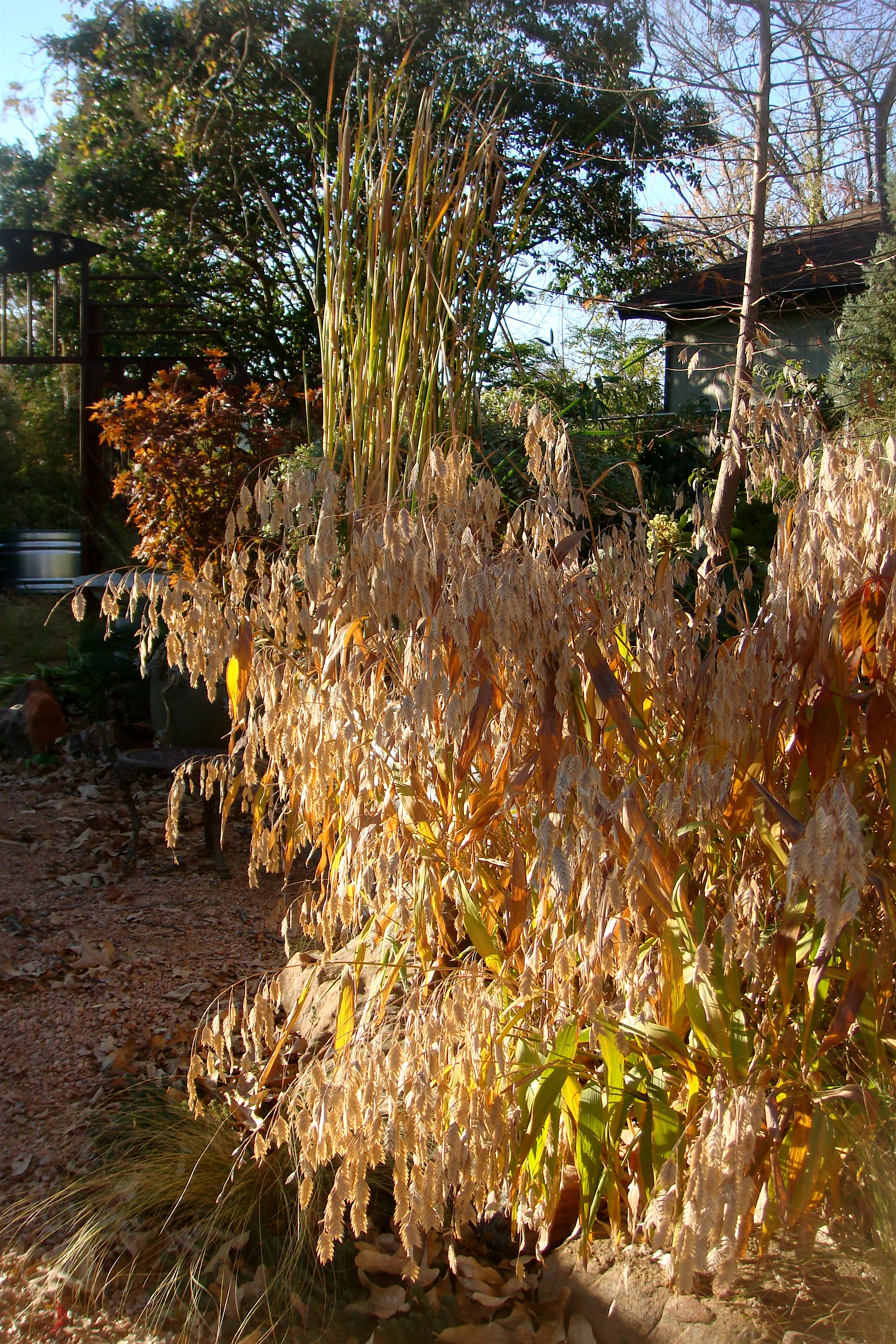 Japanese maple, cattail, inland sea oats and Mexican fire bush.
Japanese maple, cattail, inland sea oats and Mexican fire bush.
The song holds up a lot better than the 80’s video, naturally, though part of it does make me reminisce about summer iced turbans.
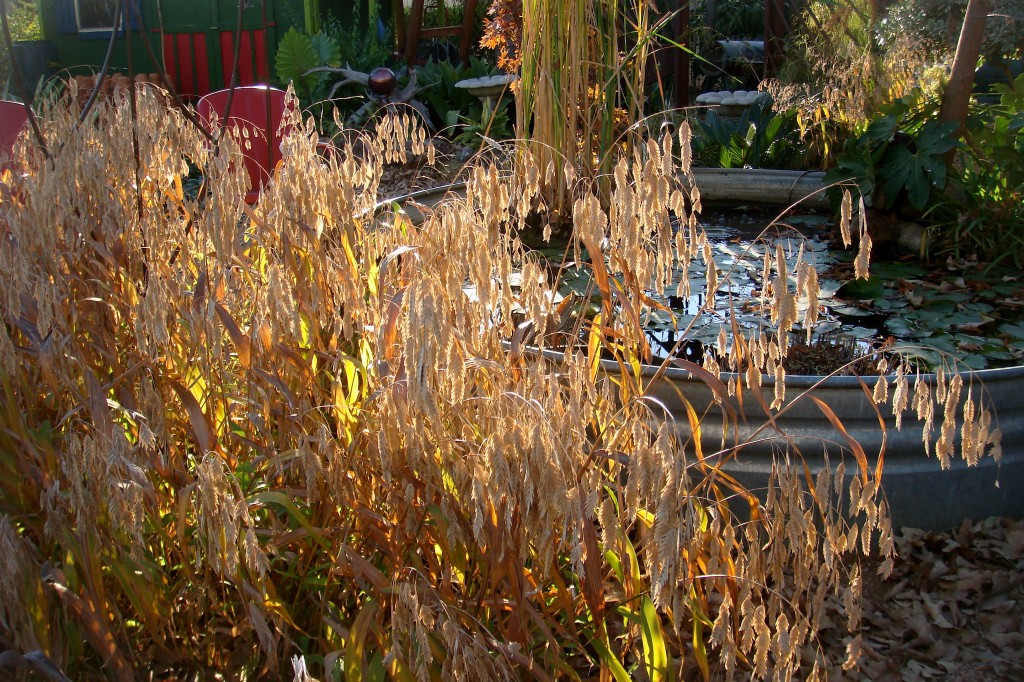
Never a frown from me either!
The golden browns emitted from these inland sea oats at this time of the year is quite something, this plant just keeps on going, it looks fresh in the spring and just keeps looking better into it’s autumn and winter years.
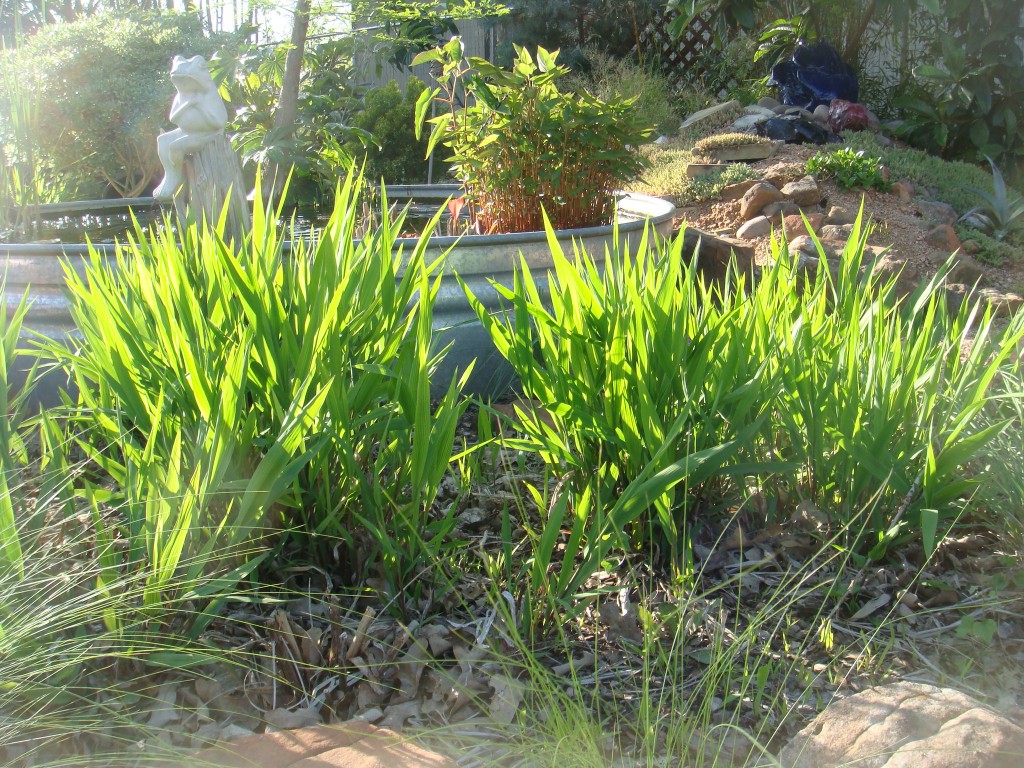
Chasmanthium latifolium
Chasmanthium latifolium or Uniola latifolia has many names including Nothern Sea Oats, Inland Sea Oats, River Oats, Creek Oats, Wild Oats, Indian Woodoats, Broadleaf uniola, Broadleaf sea-oats and broadleaf spike grass. This showy perennial is one of the first native grasses used for landscaping purposes. This great ornamental grass grows in shade or sun, though it prefers partial to full shade, hence the name Woodoats. It is tolerant of all soil types, mine grow well under the fringe cover of my large post oak.
 I have a small dedicated bed for this plant but I have never found it difficult to control, if it pops up somewhere it shouldn’t, it is quite easy to pop the offspring out of the ground. If you have a west facing garden this plant will supply plenty of light smoldering and movement throughout the winter months…a must have ornamental grass.
I have a small dedicated bed for this plant but I have never found it difficult to control, if it pops up somewhere it shouldn’t, it is quite easy to pop the offspring out of the ground. If you have a west facing garden this plant will supply plenty of light smoldering and movement throughout the winter months…a must have ornamental grass.
The seeds of this grass, when mixed with pond water “stock”, a little rosemary for flavor, and some datura seeds have also been made into countless winter “stews” that should it be devoured,
 imparts a profound effect on the diner.
imparts a profound effect on the diner.
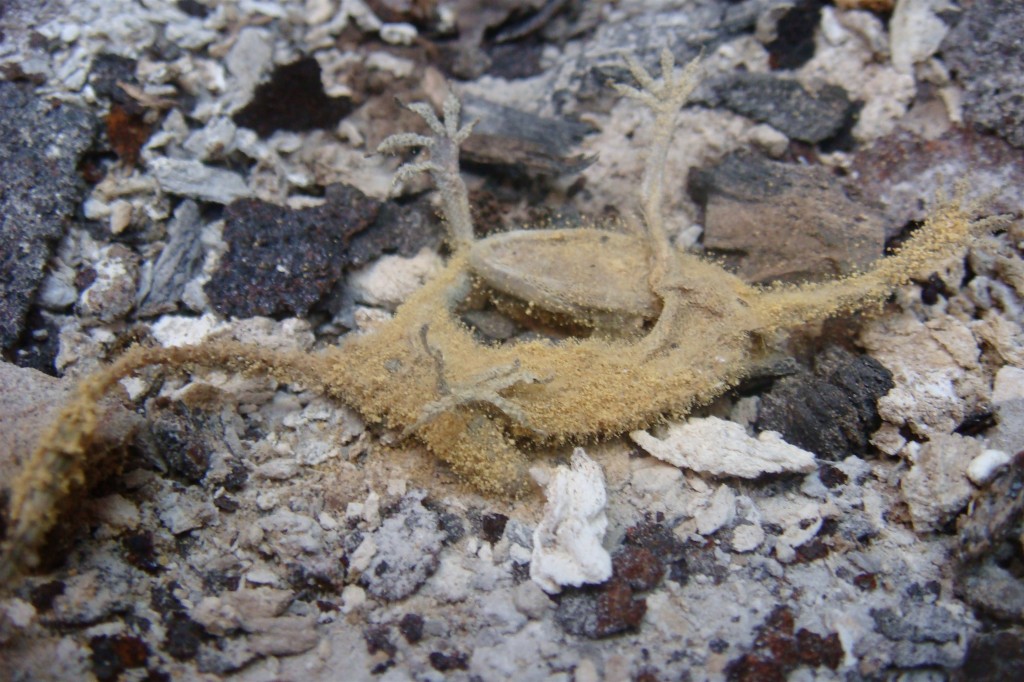 This poor little anole ingested a little too much of the lethal stew.
This poor little anole ingested a little too much of the lethal stew.
 Yet another Pompeii victim found Patch petrified.
Yet another Pompeii victim found Patch petrified.
Moving on…
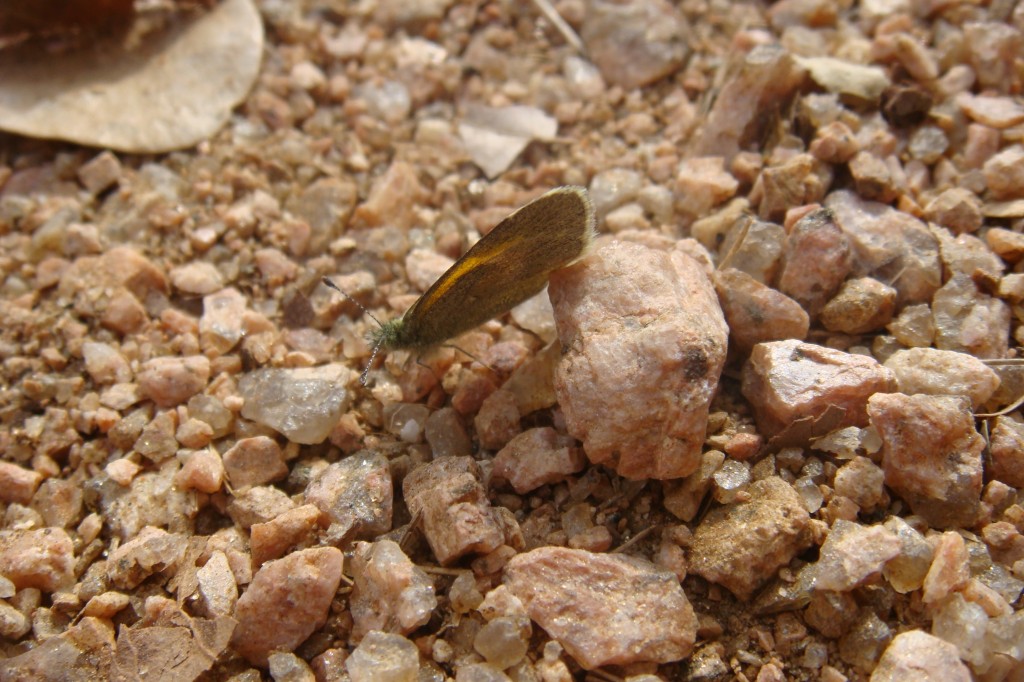 I followed this butterfly around way longer than a rational person probably should, but I was determined to get a shot in. This butterfly was extremely small as you can see from the size of the decomposed granite it alighted on.
I followed this butterfly around way longer than a rational person probably should, but I was determined to get a shot in. This butterfly was extremely small as you can see from the size of the decomposed granite it alighted on.
Dainty Sulphur (Nathalis iole)
or Dwarf Yellow. It finally landed on this rosemary where it stayed still long enough to get a couple of shots in. These butterflies are present year round in peninsular Florida and South Texas. After overwintering as adults in the South, some migrate north in spring and summer, every summer they re-colonizes through the Great Plains to southeast Washington, southeast Idaho, Wyoming, and Minnesota.
Intruder Alert…Intruder Aler…
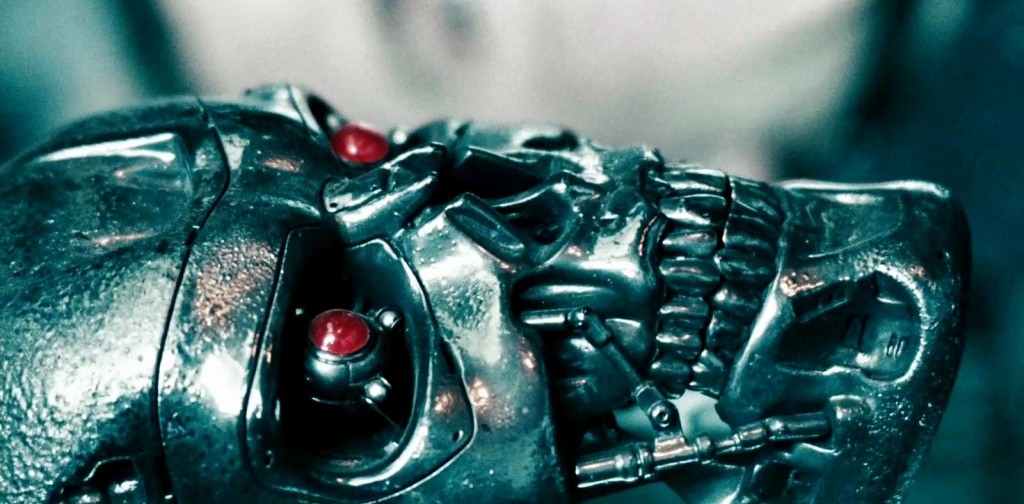 I had a mechanical looking assassin perpetrate the perimeter defenses of the Patch this week…
I had a mechanical looking assassin perpetrate the perimeter defenses of the Patch this week…
I naturally called on the services of my resident private eye to investigate the breach further…Like Dr. Watson, he was right on the case with his discerning right eye!
“He needs the abrasive silica qualities of horsetail reed to improve the optical resolution of that lens!”
There are some mighty strange insects in Texas, and this mechanical looking cannibalistic bug has to rank high up on the list. This is off course an assassin bug, or to be more precise, a wheel bug. Its name derives from the prominent crest, which resembles a cog or gear. This is the only insect species in the United States with such a crest.
Arilus cristatus
It is the largest species of assassin bug in Texas, and this one was a monster. Okay granted, it was lying dead on my back porch steps casting a long film noir shadow, but it was still a large and very formidable bug. The assassin bug slowly prowls with slow, and almost robotic movements across leaves looking for a victim to drain, and I have no shortage of leaves as you know…
 I really don’t want to talk about it.
I really don’t want to talk about it.
When it finds a suitable meal, it spears it with its long and very sharp hypodermic beak, whilst pinning down its victim with its long front legs. It then injects enzymes through this beak, paralyzing it, within 30 seconds its preys internal body parts essentially turn into runny porridge, it then proceeds to drain all of the victim’s bodily fluids through the same straw beak. Brrr.
Oh stop it Jeff!
 The wheel bug can be more than 3.5 centimeters (1.4 inches) long, and its perfectly capable of taking on a bigger grasshopper.
The wheel bug can be more than 3.5 centimeters (1.4 inches) long, and its perfectly capable of taking on a bigger grasshopper.
There are nearly 3,000 species of assassin bugs. While they come in a wide variety of colors and sizes, they all are recognizable by their geometrically shaped abdomen, their tiny head and the long beak folded under their thorax. Because assassin bugs consume so many insects, they are widely viewed as beneficial insects and can keep your garden and your shrubs free of pests.
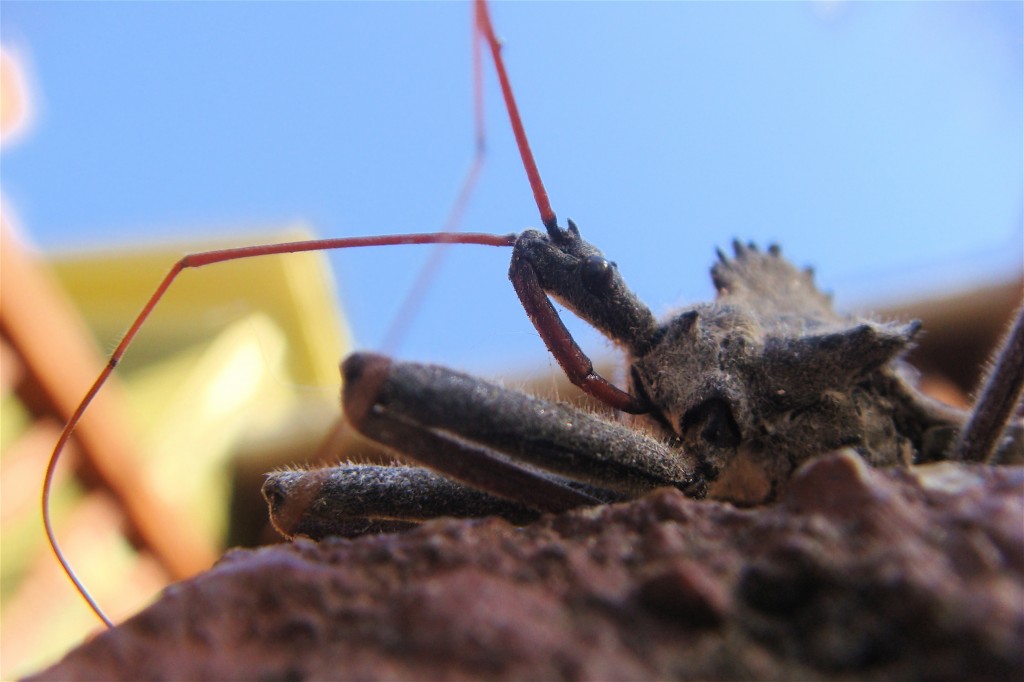 The bite of a wheel bug is painful and may take months to heal (sometimes leaving a small scar), so caution is advised when handling them…after all, who wants a mechanical looking bug sucking out your internals through a straw-beak, oh no, not me.
The bite of a wheel bug is painful and may take months to heal (sometimes leaving a small scar), so caution is advised when handling them…after all, who wants a mechanical looking bug sucking out your internals through a straw-beak, oh no, not me.
Back into the garden:
 This has to be the largest Fatsia Japonica bloom I have ever had, and the flies have already found it even though it has not yet fully opened up. This will be a mass of insects when the flowers fully open.
This has to be the largest Fatsia Japonica bloom I have ever had, and the flies have already found it even though it has not yet fully opened up. This will be a mass of insects when the flowers fully open.
 Although it is attracting them quite well already.
Although it is attracting them quite well already.
Celosia continues to perform, appropriately adding some fire and brimstone to my extremely parched Hell-Strip.
Finally:

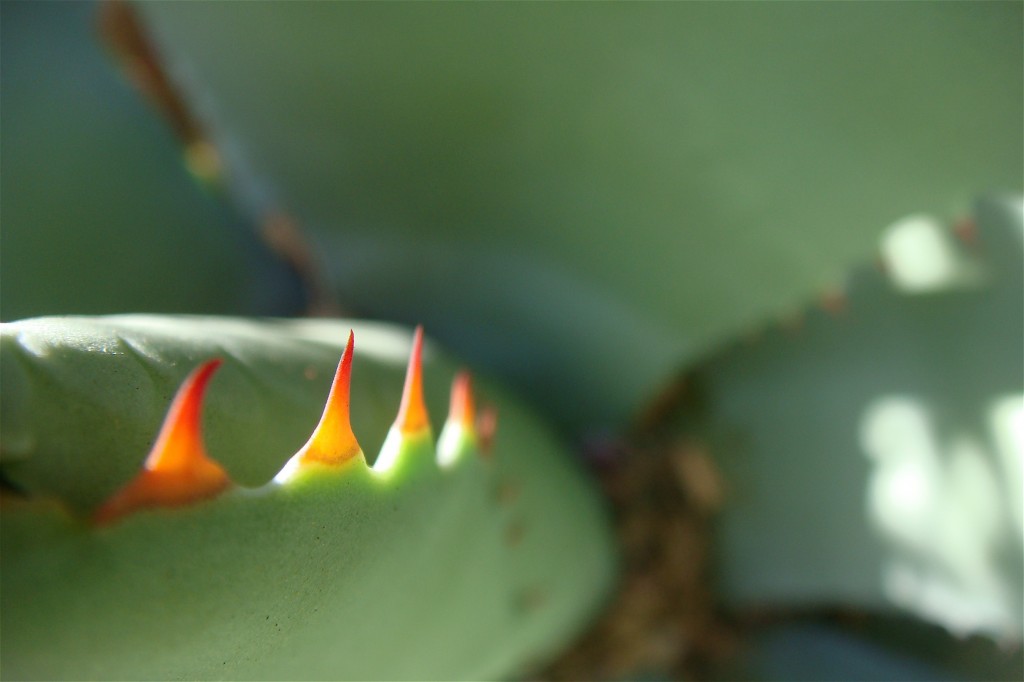 These agave parryi kept me on my toes as I attempted to extract yet more leaves that always insist on burying themselves deep into this plants lethally protected heart. I am not sure why I think I will never get flesh punctured performing this sort of picking activity without gloves.
These agave parryi kept me on my toes as I attempted to extract yet more leaves that always insist on burying themselves deep into this plants lethally protected heart. I am not sure why I think I will never get flesh punctured performing this sort of picking activity without gloves.

Kindergarten’s out for Christmas!
“I Caught a Live One!”
All material © 2010 for eastsidepatch. Unauthorized
intergalactic reproduction strictly prohibited, and
punishable by late (and extremely unpleasant) 14th century planet Earth techniques.
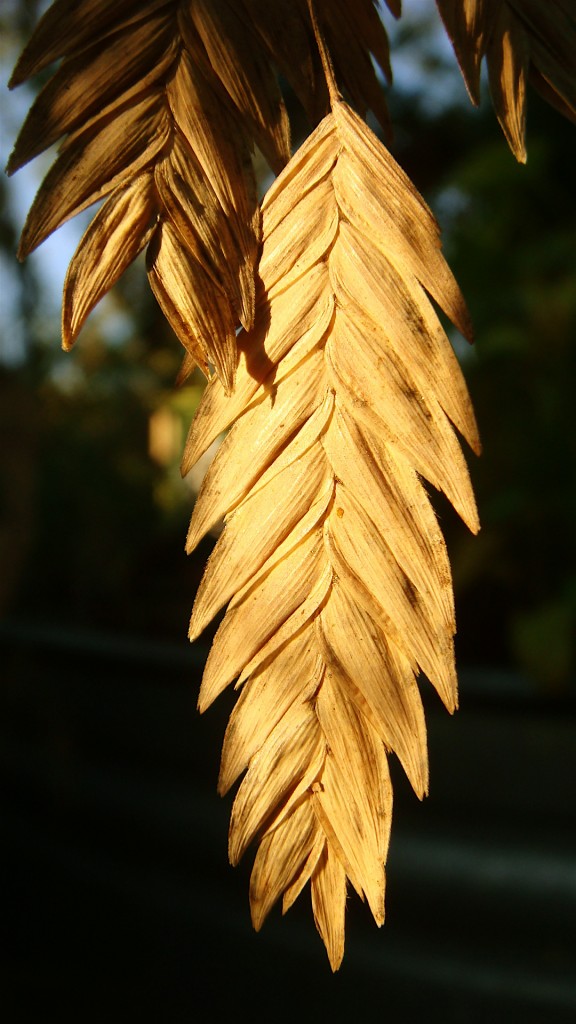

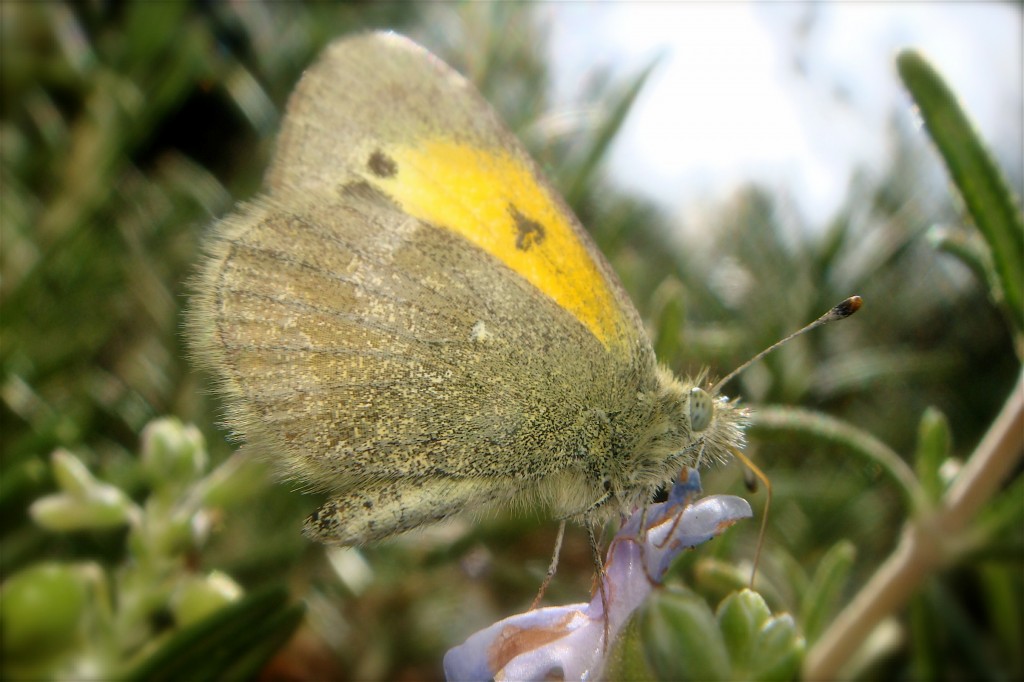


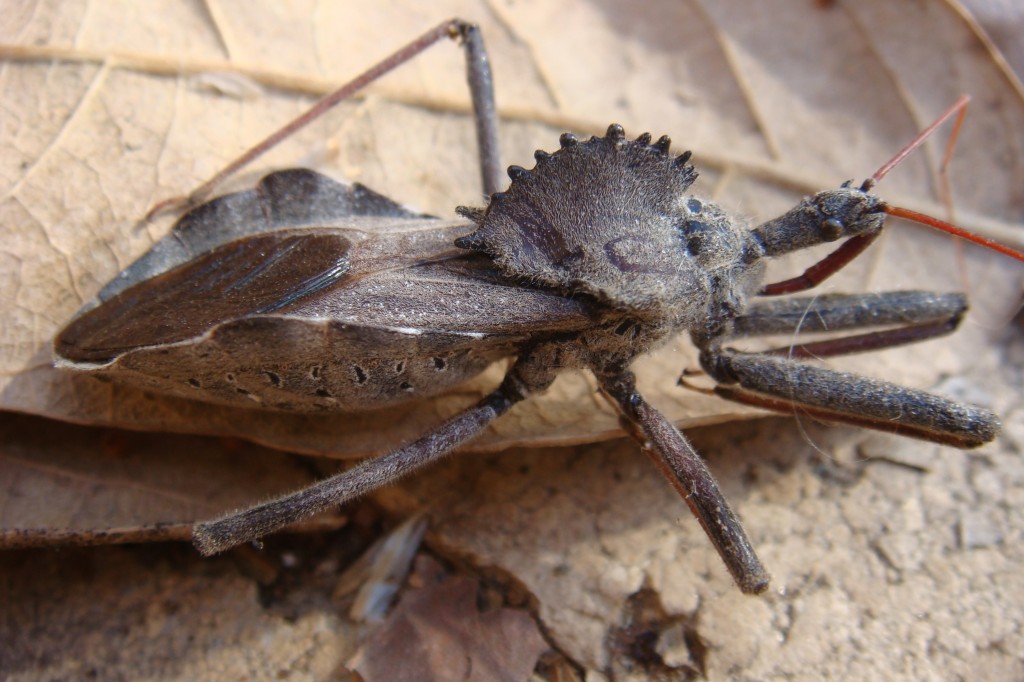




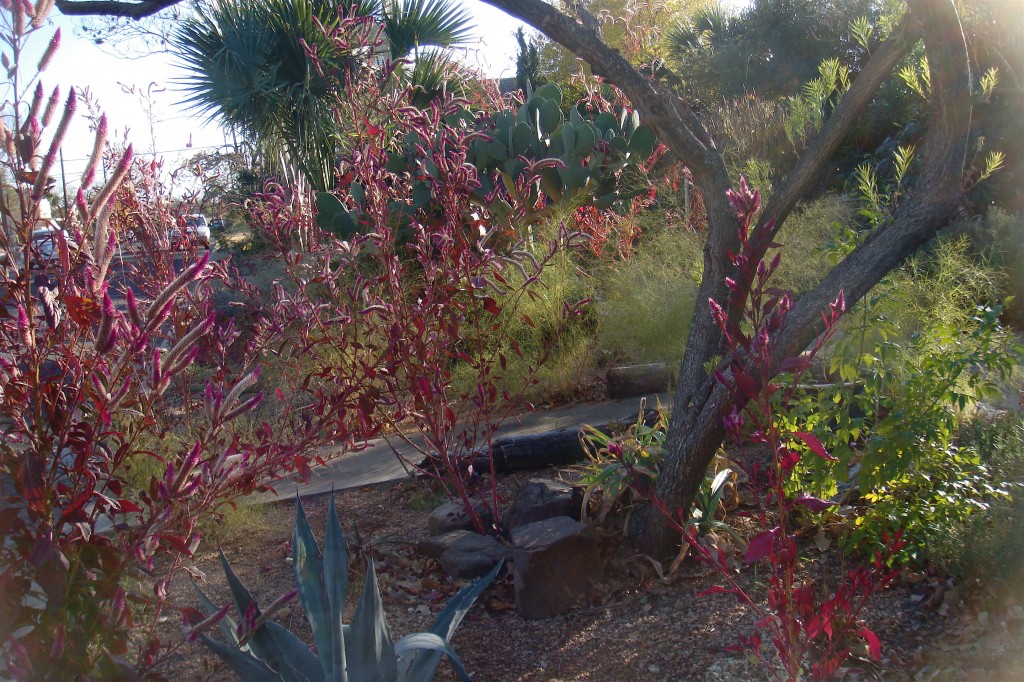


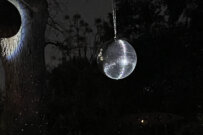





























































Comments on this entry are closed.
How come my Fatsia Japonica blooms never have a bug party on them like yours? (yeah, yeah, everything is bigger in Texas) No really. I just don’t see that activity on mine. jealous. The wheel bug is fascinating! I’m thinking its time to spread my inland sea oats around the yard more. I’ve quite a patch of them in one area…. they could easily be shared… Have you ever considered using an electric leaf blower to get those leaves out of the prickly things? Is that thought blasphamous? Did I totally misspell that? (its past my bed-time)
Hi Cheryl.
Hmm, I wonder why? I want to know what it is in the flowers that attracts all of these flies?
The wheel bug is one strange monster…and the whole beak thing…(cringes).
An electric leaf blower? What are those and what do they do? :-)
Oh and do not get me started on the city “blowers” with the two strokes strapped to their backs moving dust and pollen from one place to another! How can this still be allowed in this day and age? Ridiculous.
ESP.
I have a mental image of my grandmother gathering sea oats from the dunes. She had a big ceramic crock she would keep them in along with a piece of driftwood. As for insects, sometimes the more I learn about them the less I want to know.
Hi Les.
The sea oats do last for ages after they have been cut!
I agree on the bug front. When I scratched the surface of the assassin’s arsenal of horrific bodily parts it reminded me of the eating habits of the aliens from “War of the Worlds”. (Winces)
ESP.
Electric leaf blower.. just like the gas fired ones only quieter and less polluting (of course, they DO still use energy) and one must drag around miles of extension cord but sure is easier on my back than a bout of raking. I don’t use it but once a week or so.. like to blow the chicken feathers & “stuff” off the covered patio!
or to get the olive and sycamore leaves out of the spikey things without shedding blood. :>)
I like the cool bugs!
I know! Just messing with you Cheryl :-)
I do have a blower of sorts, but the whole extension cord palaver deters me from ever raking (ahem) it out of my shed…much quicker to pick them out. I have a ton of raking to do, ahh, so many leaves…so little time! I do need to get them up before my plants start to rot, especially my succulents, I keep delaying the inevitable.
ESP.
someone once told me Golden Brown was about heroin. a quick wiki check reveals this may indeed be true, but it may also be about Marmite.
Hi Suzie.
Interesting, never at all occurred to me, but now you mention it! And I thought you made up the Marmite part!
ESP.